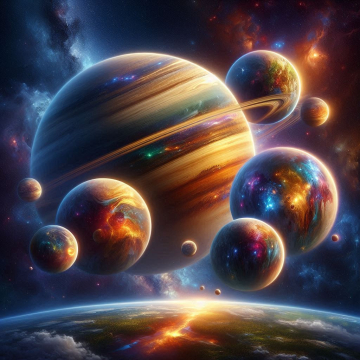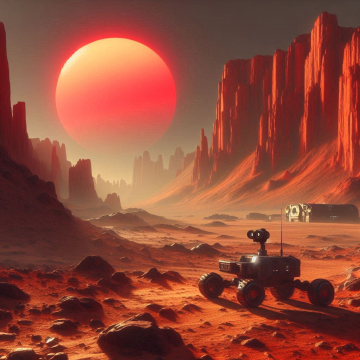The Solar System, our cosmic home, is full of celestial wonders including planets, asteroids, comets and, of course, moons. Moons are fascinating celestial bodies that orbit the planets, offering a unique look at the diversity and complexity of our cosmic neighborhood. In this article, we will explore the moons of the planets in the Solar System, except Earth, to discover their characteristics, origins and mysteries that continue to challenge our understanding.
Mars: the red planet and its two small moons.
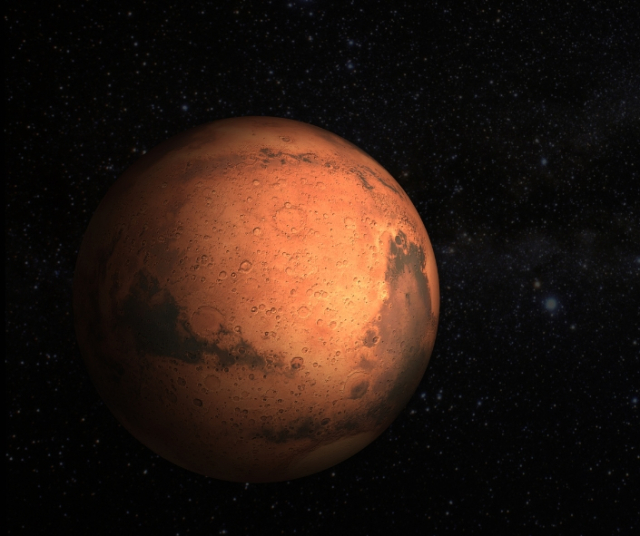
As we venture deeper into the Solar System, we reach Mars, the fourth planet from the Sun and home to two small moons: Phobos and Deimos. These moons, discovered in 1877 by American astronomer Asaph Hall, are small and rocky, and are believed to be asteroids captured by the gravity of Mars. Phobos, Mars' largest moon, is approximately 22 kilometers in diameter, while Deimos is slightly smaller, at approximately 12 kilometers in diameter. Both moons orbit close to Mars and have irregular orbits, suggesting their origin as captured asteroids rather than moons formed alongside the planet.
Jupiter: the King of the planets and his abundant court of moons.
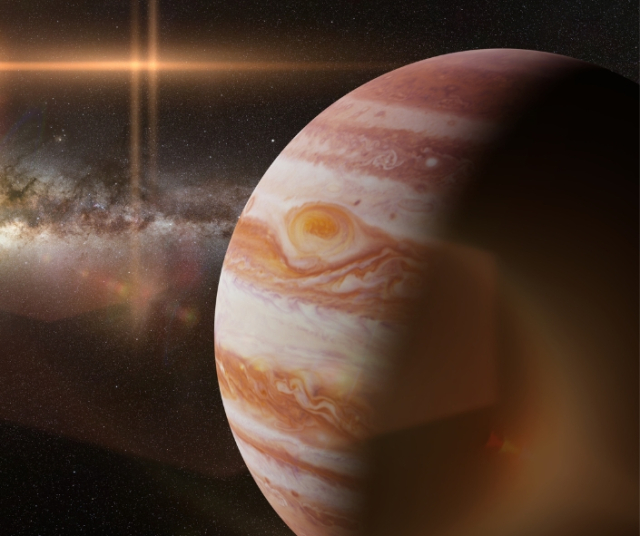
Now we come to Jupiter, the gas giant of the Solar System and the planet with the largest number of known moons. Jupiter has a total of 79 confirmed moons, although it is believed that there are more moons yet to be discovered. Among the most prominent moons of Jupiter are the four Galilean moons: Io, Europa, Ganymede and Callisto. These moons, discovered by Galileo Galilei in 1610, are the largest objects in the Solar System after planets and are known for their variety of geological features and possible underground oceans that could support extraterrestrial life.
Io.
Io is the closest moon to Jupiter and one of the most intriguing in the Solar System. It is known for its extremely active volcanic activity, with hundreds of volcanoes covering its surface and spewing geysers of lava miles into the air. Io is so close to Jupiter that its volcanic activity is driven by the planet's intense gravity, creating a surreal and dynamic lunar landscape.
Europe.
Europa is another fascinating moon of Jupiter that has captured the interest of scientists due to its ice-covered surface and the possible presence of an underground ocean beneath its icy crust. It is believed that this ocean could contain conditions suitable for life, making Europa one of the main exploration targets in the search for extraterrestrial life in the Solar System.
Ganymede.
Ganymede is the largest moon in the Solar System and is also known for being the only moon that has its own magnetic field. It has a varied surface, including craters, mountains and valleys, and its interior is believed to house an ocean of liquid water under a thick layer of ice. This makes Ganymede another promising candidate for the search for extraterrestrial life in the Solar System.
Callisto.
Callisto is the farthest moon from Jupiter of the four Galilean moons and the third largest moon in the Solar System. It has an ancient, cratered surface, suggesting a calm and stable geological history. Although it is not believed to have an underground ocean like Europa and Ganymede, Callisto remains an object of interest for scientific research due to its composition and geological evolution.
In addition to the four Galilean moons, Jupiter has numerous smaller moons, including Amalthea, Himalia, Elara, and Leda, among others. These moons vary in size, shape and composition, and continue to be the subject of study and research by scientists around the world.
Saturn: the lord of the rings and its various moons.
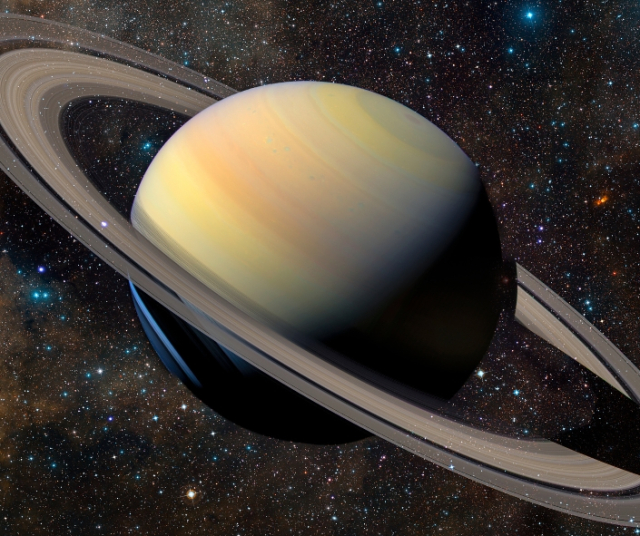
The next destination on our tour of the moons of the Solar System is Saturn, the planet famous for its impressive rings and varied collection of moons. Saturn has a total of 82 known moons, although this number is expected to increase as more observations and studies are carried out. Among the most prominent moons of Saturn are Titan, Rhea, Dione, Tethys and Enceladus.
Titan.
Titan is the largest moon of Saturn and the second largest moon in the Solar System. It is known for its dense atmosphere and geologically diverse landscape, which includes lakes and seas of liquid hydrocarbons on its surface. Titan is an object of great interest to scientists due to its potential to support life in its underground oceans of liquid water and its similarity to the early Earth.
Rhea.
Rhea is Saturn's second largest moon and one of the oldest moons in the Solar System. It has a surface covered with craters and cracks, suggesting a geological history marked by impacts and tectonic activity. Rhea has also been the subject of study by space missions that have explored Saturn, such as the Cassini probe, which has provided detailed images of its surface.
Dione.
Dione is another intriguing moon of Saturn, known for its cratered surface and possible past geological activity. Dione is believed to have an underground ocean beneath its icy crust, making it another promising candidate for the search for extraterrestrial life in the Solar System.
Thetis.
Tethys is a unique moon of Saturn that has a notable geological feature known as the Odysseus Crater, a huge crater that covers much of its surface. Tethys also has a unique shark-shaped relief that has intrigued scientists and sparked speculation about its origin and formation.
Enceladus.
Enceladus is a small but intriguing moon of Saturn, known for its geological activity in the form of ice geysers emanating from its surface. These geysers suggest the presence of an underground ocean of liquid water beneath its icy crust, making Enceladus another potential candidate for the search for extraterrestrial life in the Solar System.
In addition to these prominent moons, Saturn has a wide variety of smaller moons, including Hyperion, Iapetus, Phoebe, and Mimas, among others. Each of these moons has its own unique characteristics and mysteries that continue to intrigue scientists and space explorers.
Uranus: the ice giant and its icy moons.

Our next destination on this journey through the moons of the Solar System is Uranus, the seventh planet from the Sun and the first of the ice giants. Uranus has a total of 27 known moons, which are divided into two main groups: the inner moons and the outer moons. Among the most prominent moons of Uranus are Miranda, Ariel, Umbriel, Titania and Oberon.
Miranda.
Miranda is a unique and fascinating moon of Uranus, known for its extremely rugged surface and variety of geological features, including canyons, cliffs and craters. Miranda's strange topography suggests a tumultuous geological history marked by impacts and tectonic activity.
Ariel.
Ariel is a large and relatively young moon of Uranus, known for its smooth and relatively crater-free surface. Ariel is believed to have a rocky core surrounded by a shell of water and ammonia ice, making it an object of interest for studying the composition and evolution of ice giant moons.
Umbriel.
Umbriel is another intriguing moon of Uranus, known for its dark and relatively smooth surface. Although Umbriel has few visible craters, it is believed to have experienced a geological history marked by impacts and tectonic processes that have shaped its surface over time.
Titania.
Titania is the largest moon of Uranus and the eighth largest moon in the Solar System. It has a varied surface including craters, valleys and canyons, and is believed to have a composition similar to that of Ariel, with a rocky core surrounded by a shell of water ice and ammonia.
Oberon.
Oberon is another prominent moon of Uranus, known for its ancient surface and variety of geological features, including craters, canyons, and mountains. Oberon is believed to have experienced a quiet and stable geological history, with few signs of recent tectonic activity.
Neptune: the last giant and its mysterious moons.

Our last stop on this journey through the moons of the Solar System is Neptune, the eighth and last planet from the Sun. Neptune has a total of 14 known moons, which are divided into two main groups: regular moons and irregular moons. Among the most prominent moons of Neptune are Triton, Proteus, Nereid and Naiad.
Triton.
Triton is Neptune's largest moon and one of the most intriguing moons in the Solar System. It is known for its ice-covered surface and its geological activity in the form of liquid nitrogen geysers that emanate from its surface. Triton is unique among the Solar System's moons for its retrograde orbit around Neptune, suggesting that it could be a captured Kuiper Belt object rather than a native moon of the planet.
Proteus.
Proteus is another interesting moon of Neptune, known for its irregular shape and cratered surface. Proteus is believed to have a rocky and icy composition, similar to that of other moons of Neptune, and has been the subject of study by space missions that have explored the Neptunian system.
Nereid.
Nereid is an irregular and mysterious moon of Neptune, known for its eccentric orbit and uncertain composition. Nereid is believed to be a captured Kuiper Belt object, making it an object of interest for the study of orbital dynamics and the evolution of the Neptune moon system.
Naiad.
Naiad is a small, little-studied moon of Neptune, known for its close orbit around the planet and its irregular shape. Although little is known about Naiad, it is believed to have a similar composition to other moons of Neptune, with a mixture of ice and rock on its surface.
The moons of the Solar System's planets are fascinating celestial bodies that offer a unique look at the diversity and complexity of our cosmic neighborhood. From the rocky, volcanic moons of Mars to the icy, geologically active moons of Jupiter and Saturn, each moon has its own unique set of features and mysteries that continue to challenge our understanding and amaze our imagination. As we continue to explore the Solar System and beyond, we can expect to discover new moons, new questions, and new answers that will help us better understand our place in the cosmos and the incredible universe around us.


